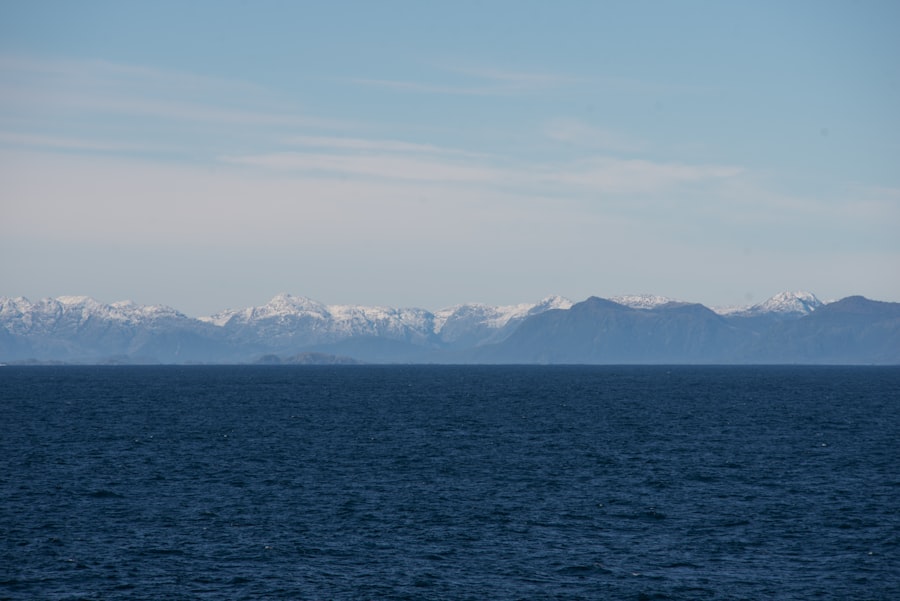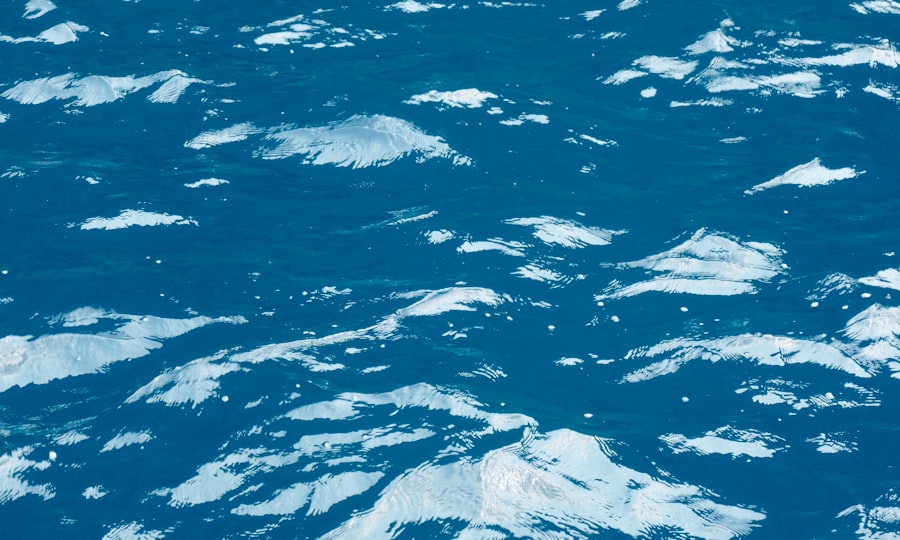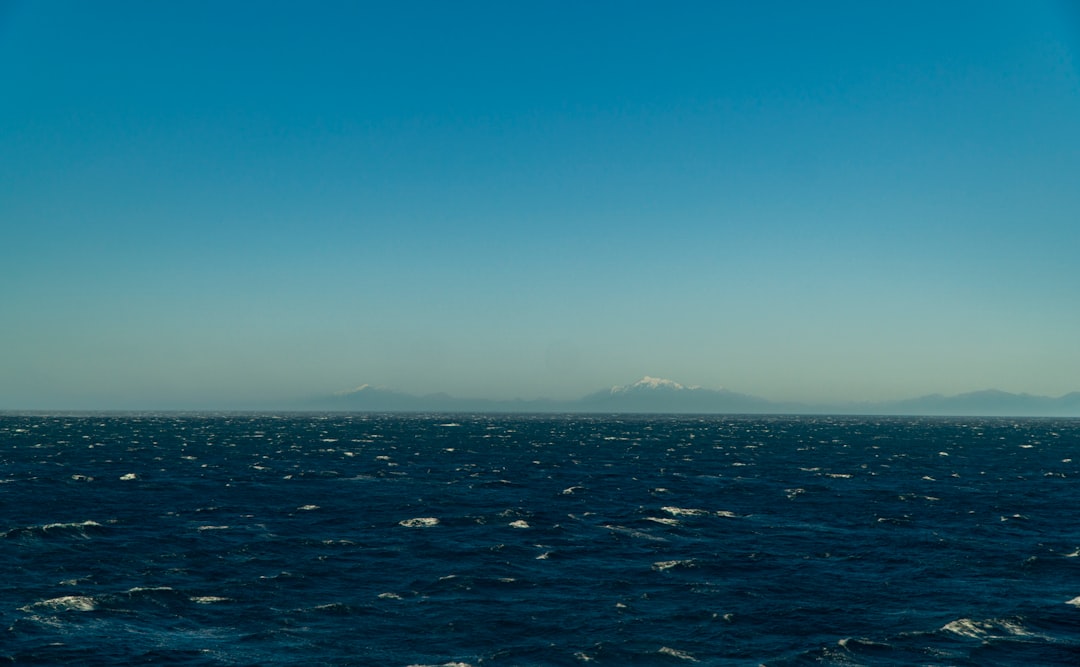The Drake Passage, a body of water located between the southern tip of South America and Antarctica, is renowned for its tumultuous seas and unpredictable weather. This narrow stretch of ocean, measuring approximately 800 kilometers (500 miles) wide, serves as a critical conduit for maritime traffic between the Atlantic and Pacific Oceans. Named after the English explorer Sir Francis Drake, who navigated these waters in the late 16th century, the passage has become a focal point for researchers, sailors, and adventurers alike.
Its unique geographical position not only makes it a vital route for shipping but also a significant area for studying oceanic and atmospheric phenomena. The passage is characterized by its powerful currents and often treacherous conditions, which can pose significant challenges to vessels traversing its waters. The confluence of the Atlantic and Pacific Oceans creates a dynamic environment where weather patterns can shift rapidly, leading to rough seas and strong winds.
For those who dare to navigate this formidable stretch of ocean, understanding its complexities is essential for ensuring safe passage. The Drake Passage is not merely a geographical feature; it is a living entity that demands respect and knowledge from all who venture into its depths.
Key Takeaways
- The Drake Passage is a narrow body of water between South America’s Cape Horn and the South Shetland Islands of Antarctica.
- Ocean currents in the Drake Passage are influenced by the Antarctic Circumpolar Current and the Antarctic Divergence.
- Factors such as wind, temperature, and salinity play a significant role in determining the direction of ocean currents in the Drake Passage.
- Navigating the Drake Passage poses challenges due to strong winds, unpredictable weather, and rough seas.
- Strategies for navigating the Drake Passage include careful route planning, monitoring weather forecasts, and using advanced navigation technology.
Understanding the Ocean Currents in the Drake Passage
The ocean currents within the Drake Passage are among the most powerful in the world, driven by a combination of wind patterns, water temperature differences, and the Earth’s rotation. The Antarctic Circumpolar Current (ACC) is the most significant current in this region, flowing from west to east around Antarctica and influencing the entire Southern Ocean. This current is unique in that it is not impeded by any landmass, allowing it to gain strength as it travels through the passage.
The ACC plays a crucial role in regulating global climate patterns by redistributing heat and nutrients across the oceans. In addition to the ACC, other currents interact within the Drake Passage, creating a complex system that can be difficult to predict. The convergence of warm and cold water masses leads to varying temperatures and salinity levels, which can further influence local weather conditions.
Sailors navigating these waters must be acutely aware of how these currents behave, as they can significantly impact vessel speed and direction. Understanding the interplay of these currents is essential for safe navigation and efficient travel through this challenging maritime corridor.
Factors Influencing Current Direction in the Drake Passage

Several factors contribute to the direction and strength of currents in the Drake Passage. One of the primary influences is wind patterns, particularly the prevailing westerlies that dominate this region. These winds can push surface waters in specific directions, altering current flow and creating areas of turbulence.
Additionally, seasonal changes can affect wind strength and direction, leading to variations in current behavior throughout the year. Sailors must remain vigilant to these changes, as they can dramatically impact navigation strategies. Another critical factor is the topography of the seafloor beneath the Drake Passage.
The underwater landscape includes deep trenches and ridges that can channel currents in specific directions or create eddies that disrupt normal flow patterns. These geological features can lead to unpredictable conditions that challenge even experienced mariners. Furthermore, variations in water temperature and salinity can create density differences that influence how currents move.
Understanding these factors is vital for anyone attempting to navigate this complex marine environment.
Navigational Challenges in the Drake Passage
| Challenge | Description | Impact |
|---|---|---|
| Strong Winds | High-speed winds can make navigation difficult and dangerous. | Increased risk of ship instability and delays. |
| Icebergs | Presence of icebergs poses a threat to navigation. | Risk of collision and damage to vessels. |
| Rough Seas | Heavy swells and rough seas can make navigation challenging. | Potential for sea sickness and discomfort for passengers and crew. |
| Narrow Passage | The narrowness of the passage can make navigation tricky. | Requires precise maneuvering and navigation skills. |
Navigating the Drake Passage presents numerous challenges that can test even the most seasoned sailors. The combination of strong currents, unpredictable weather, and shifting sea conditions creates an environment where caution is paramount. One of the most significant challenges is the potential for sudden storms that can arise without warning.
These storms can produce towering waves and fierce winds, making it difficult for vessels to maintain control. Mariners must be prepared for rapid changes in weather and have contingency plans in place to ensure their safety. Another challenge lies in the sheer volume of maritime traffic that traverses the Drake Passage.
With commercial shipping routes connecting major ports across the globe, vessels must remain vigilant to avoid collisions and navigate safely through congested waters. The presence of icebergs and other hazards further complicates navigation, as these obstacles can be difficult to spot until they are dangerously close. Effective communication and situational awareness are essential for successfully navigating these treacherous waters.
Strategies for Navigating the Drake Passage Current Direction
To successfully navigate the currents of the Drake Passage, sailors must employ a variety of strategies tailored to their specific vessels and conditions. One effective approach is to utilize real-time data on current speeds and directions, allowing mariners to adjust their course accordingly. Many modern vessels are equipped with advanced navigation systems that provide up-to-date information on oceanographic conditions, enabling sailors to make informed decisions about their routes.
Additionally, understanding tidal patterns can be beneficial when planning a journey through the passage. By timing departures to coincide with favorable currents, sailors can take advantage of natural flows that assist their progress rather than hinder it. Experienced mariners often share insights about local conditions and best practices for navigating these waters, creating a community of knowledge that can enhance safety and efficiency.
Importance of Weather Forecasting in Navigating the Drake Passage

Weather forecasting plays a crucial role in ensuring safe navigation through the Drake Passage. Given its reputation for rapidly changing conditions, accurate weather predictions are essential for mariners planning their journeys. Modern technology has significantly improved forecasting capabilities, allowing sailors to access detailed information about wind patterns, wave heights, and potential storm systems well in advance of their voyages.
Sailors are encouraged to consult multiple sources for weather updates, as discrepancies can occur between different forecasting models. By staying informed about impending weather events, mariners can make strategic decisions about when to set sail or whether to alter their course mid-journey. The ability to anticipate weather changes not only enhances safety but also contributes to more efficient navigation through this challenging maritime region.
Safety Measures for Navigating the Drake Passage Current Direction
Safety should always be a top priority when navigating the Drake Passage. Mariners are advised to conduct thorough pre-voyage preparations, including vessel inspections and safety drills for crew members. Ensuring that all safety equipment is in working order—such as life jackets, flares, and emergency beacons—is essential for responding effectively to emergencies.
In addition to equipment checks, maintaining open lines of communication with other vessels and shore-based authorities is vital for safety in these waters. Regularly updating position reports and sharing information about current conditions can help create a safer navigational environment for all mariners involved. Furthermore, having contingency plans in place for various scenarios—such as equipment failure or sudden weather changes—can significantly enhance a vessel’s resilience when faced with unexpected challenges.
Equipment and Technology for Navigating the Drake Passage
Advancements in technology have revolutionized navigation in challenging environments like the Drake Passage. Modern vessels are often equipped with sophisticated navigation systems that integrate GPS data with real-time oceanographic information. These systems allow sailors to monitor current speeds and directions while plotting optimal courses based on prevailing conditions.
In addition to navigation systems, weather monitoring equipment plays a crucial role in ensuring safe passage through the passage. Instruments such as barometers, anemometers, and satellite communication devices provide valuable data on atmospheric conditions that can influence sailing decisions. By leveraging these technologies, mariners can enhance their situational awareness and make informed choices that improve their chances of successful navigation.
Tips for Sailors and Boaters in the Drake Passage
For those planning to navigate the Drake Passage, several practical tips can enhance safety and efficiency during their journey. First and foremost, thorough preparation is key; this includes studying charts of the area, understanding local currents, and familiarizing oneself with potential hazards such as icebergs or shallow waters. Knowledge of historical weather patterns can also provide valuable insights into what conditions may be expected during a voyage.
Additionally, maintaining flexibility in travel plans is essential when navigating this unpredictable region. Sailors should be prepared to adjust their routes based on real-time conditions or emerging weather patterns. Engaging with local maritime communities or forums can also provide valuable insights from experienced sailors who have navigated these waters before.
Historical Significance of the Drake Passage
The historical significance of the Drake Passage cannot be overstated; it has long been a critical route for explorers, traders, and researchers alike. Sir Francis Drake’s expedition in 1578 marked one of the first European attempts to navigate these treacherous waters, paving the way for future exploration of Antarctica and beyond. Over centuries, countless adventurers have braved its challenges in pursuit of discovery or trade.
In more recent history, the passage has become an important area for scientific research related to climate change and marine ecosystems. Researchers study its unique oceanographic conditions to better understand global climate patterns and their implications for biodiversity. The Drake Passage continues to serve as a vital link between continents while also standing as a testament to human exploration and resilience.
Environmental Considerations in Navigating the Drake Passage
As maritime traffic through the Drake Passage increases, environmental considerations have become increasingly important. The delicate ecosystems surrounding this region are vulnerable to disturbances caused by shipping activities, including pollution from vessels or potential oil spills. Mariners must prioritize environmentally responsible practices while navigating these waters to minimize their impact on local wildlife.
Additionally, understanding how climate change affects ocean currents and marine life is crucial for preserving this unique environment. Researchers continue to study how shifts in temperature and salinity influence ecosystems within the passage, providing valuable insights into conservation efforts. By fostering awareness among sailors about their environmental responsibilities, it is possible to protect this vital marine corridor for future generations while still allowing for safe navigation through its challenging waters.
The current direction in this passage is predominantly from west to east, driven by the powerful Antarctic Circumpolar Current. This current is the world’s largest ocean current and is vital for regulating the Earth’s climate by redistributing heat and nutrients across the globe. For more detailed insights into ocean currents and their impact on global climate patterns, you can explore a related article on MyGeoQuest. This resource provides comprehensive information on various geographical phenomena, including ocean currents and their significance.
WATCH NOW! Drake Passage: Earth’s Deadliest Waters Revealed
FAQs
What is the Drake Passage?
The Drake Passage is the body of water between the southern tip of South America and the northern tip of the Antarctic Peninsula. It is known for its rough seas and strong winds.
What is the current direction in the Drake Passage?
The current in the Drake Passage generally flows from west to east, driven by the Antarctic Circumpolar Current. This current is the largest and strongest ocean current in the world.
How strong are the currents in the Drake Passage?
The currents in the Drake Passage can be very strong, with speeds reaching up to 1-2 meters per second. These strong currents contribute to the rough and unpredictable nature of the passage.
Why is the current direction in the Drake Passage important?
The current direction in the Drake Passage is important for understanding global ocean circulation patterns and for navigation in the region. It also plays a crucial role in the transport of heat and nutrients around the world’s oceans.
